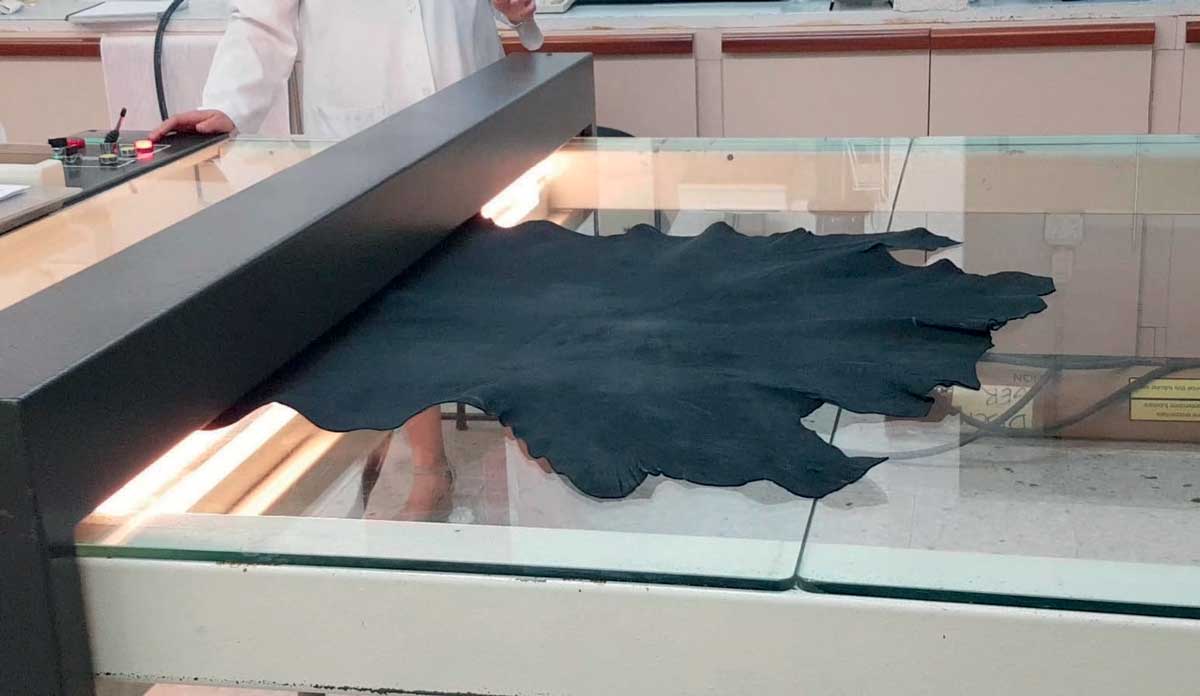The revision of the method “UNI EN ISO 27587: 2021 Leather - Chemical tests - Determination of free formaldehyde in the process of chemical auxiliaries” related to chemicals used in the tanning process has recently been published.
The review process had the objective of clarifying the procedure for the determination, without modifying the structure of the standard cornerstones. The method consists in determining the quantity of formaldehyde, a substance whose quantity must be kept under control following the Reach regulation, which might be released from a chemical product: the sample is placed in a U-tube immersed in a 90 ° thermostated bath for 30 minutes with one of the two ends of the tube respectively connected to a flow of inert gas and to a cartridge containing the derivatizer 2,4-dinitrophenylhydrazine (DNPH, also known as Brady’s reagent, and is the typical derivatizer of aldehydes and ketones).
The gas flow, going through the chemical sample, transports the released formaldehyde to the cartridge containing DNPH: the formaldehyde, in contact with the DNPH, reacts to give the corresponding 2,4-dinitrophenylhydrazone. The analyte is subsequently recovered from the cartridge by eluting it with acetonitrile and analyzed in HPLC. In the new version of the standard, the steps to be followed in the determination procedure are better detailed, both with illustrations and descriptive parts; Annex B has also been added which provides information on the chromatographic conditions that can be used.
The method differs from UNI EN ISO 17226-1 (formaldehyde in leather, also recently revised) in the way analyte is extracted from the matrix and in the environment in which the derivatization phase takes place: in fact, in the UNI EN ISO 27587 method, the chemicals are extracted in the inert gaseous phase and subsequently treated only with solvent, while for the leather, in the UNI EN 17226- 1, the extraction is carried out in the aqueous phase: this has the consequence that with the method for leather, the amount of hydrolyzable formaldehyde is also determined, in addition to the free one. With these premises, it is evident that in ISO 27587 it is not possible to dilute the sample in water, if the quantity of formaldehyde developed completely consumes the reagent contained in the cartridge; the only possible approach, repeating the determination, is to add cartridges in series at the exit of the U-tube, in order to ensure the capture of all the released formaldehyde.

